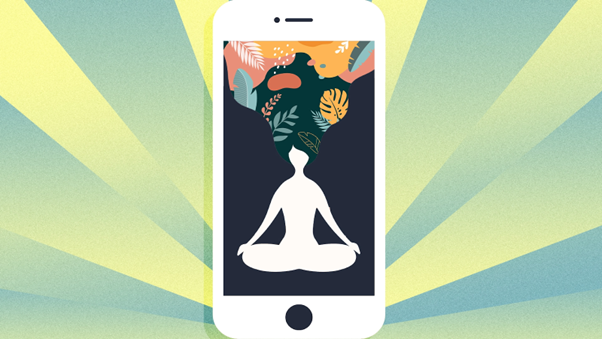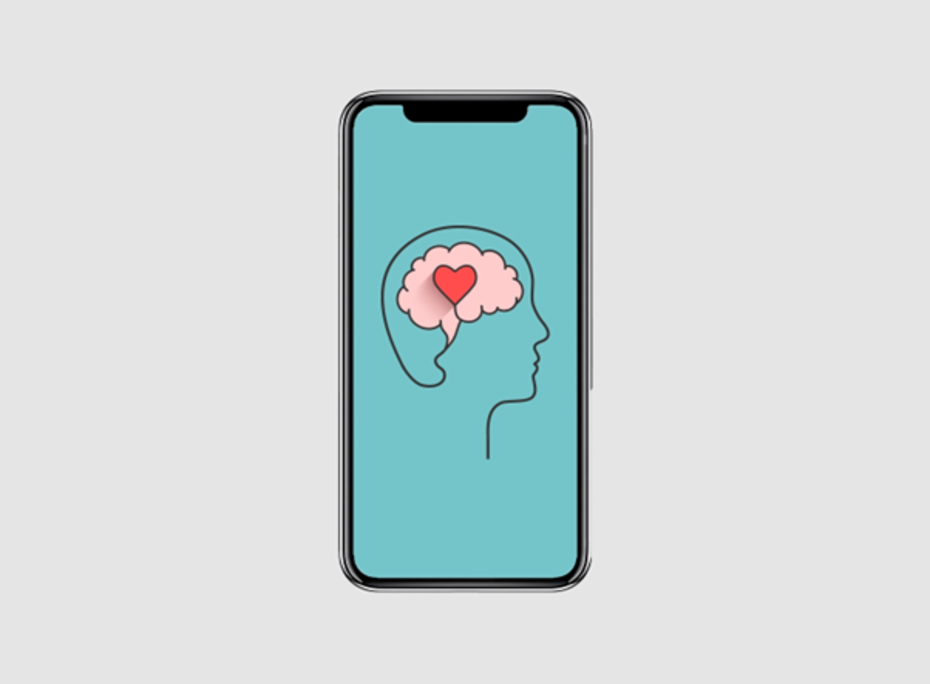Taking care of one’s mental health is always important, and this has also become possible in the online sphere. Creating mental health apps is becoming an urgent task for those who strive to create effective and affordable tools. That is why, in this article, we will talk about how to develop a mental health app.
What Is Important in a Mental Health App?
Mental health apps can provide various features such as meditation, mood tracking, psychological tests, and consultations with psychologists.
They should be as accessible and user-friendly as possible. This means that everything should have a simple and intuitive interface and should be easily accessible and understandable. Another important feature is their privacy. Users often encounter complex and sensitive problems, so the platform must provide complete confidentiality and security of user data.
Effectiveness directly depends on the quality of their content. The app should provide the user with accurate and quality data, as well as effective tools. Mental health apps should be constantly updated.
How Do Mental Health Apps Work?
Mental health apps may work differently, depending on their functionality and purpose. However, common steps of the operation are as follows:
- User registration: when the user first starts up, they must register and create their profile. This may include entering data about themselves, their problems, and their goals.
- Assessment of the psychological state: taking tests, questionnaires, or other methods of assessing his mental state. This will determine the individual needs of the user and select the appropriate one.
- Providing content: the app can offer different content such as stress management guides, meditation practices, video lessons, psychological exercises, etc.
- Tracking and data analysis: Some projects may include tracking mood, stress level, or sleep. The user can mark their emotions and the system analyzes the data, providing the user with statistics and recommendations.
- Feedback and consultation: the possibility to communicate with psychologists or other specialists through chats and video conferences. This can be useful for those who need advice and support from professionals.
Also, many projects work in online community mode, where people can communicate with each other, share their experiences, and support each other.
What Are the Benefits of a Mental Health App?
Such projects have many advantages that make them popular. Let’s learn more about some of the benefits:
- Accessibility: available for use anytime and anywhere, which is convenient for those who cannot visit a psychologist or other professional in person.
- Anonymity: many people may face the stigma associated with issues and may not want to share their problems with others. They allow anonymity and confidentiality when working.
- A wide range: can provide a variety of features and tools that help improve well-being. It can be meditation, mood tracking, psychological exercises, materials, etc.
- Cost-effective: using apps is cheaper than visiting a psychologist or other specialist in person.
- Constant access to help: can receive support and advice at any time of the day, without having to wait for an appointment to see a specialist.
- Ability to self-manage their own health: apps give work independently to improve their condition.
- Convenience: the smartphone is always easily accessible and easy to use, which can attract those who prefer to use technology to solve their problems.
Types of Mental Health Apps and the Most Successful Examples
There are many types of these apps, and each type is designed for a specific purpose. Some of the most common types are:
- For meditation and relaxation: teach the basics techniques that can help manage stress. For example, Calm, Headspace, and Insight Timer.
- For mood tracking: help track and analyze their moods so they can understand their emotions. For example, Moodfit, Daylio, Youper.
- For stress management: give the user access to tools and techniques to help manage stress. For example, Sanvello, Happify, Pacifica.
- Self-diagnosis: allows to determine if they have a certain mental disorder. For example, MoodMission, What’s Up, Woebot.
- For online therapy: provide the user with an online consultation with a psychotherapist or psychiatrist. For example, BetterHelp, Talkspace, Amwell.
The most successful examples are Calm, Headspace, Moodfit, Sanvello, BetterHelp, and Talkspace. They have received positive reviews and many downloads. Learning about successful examples in the sphere can help you to understand how to develop your own app that will be able to stand out.
Key Features of a Mental Health App
When it comes to the key features of a mental health app everything depends on the type of app and its purpose. But there are some common nuances that may include:
- Mood Tracking: track their emotions, mood, and stress levels using graphs and charts.
- Online therapy: access online counselling sessions with a therapist or psychiatrist that can help them address their issues.
- Exercises: access breathing exercises, meditation, and other techniques.
- Online diaries: keep your own online diary to record thoughts, feelings, and emotions.
- Notifications and reminders: receive notifications and reminders.
- Risk assessment: take questionnaires and tests.
Also, some projects may have additional features, such as games, exercises to improve sleep and nutrition, psychological training, and others.
Main Steps to Develop a Mental Health App
The process of creating a mental health app can be complex and multifaceted. Work on such a project includes the following steps:
- Define goals: determine exactly what you want to achieve. For example, you may want to create a product to improve mood, reduce stress levels, increase self-awareness, prevent disorders, etc.
- Market research: conduct market research to determine what features and capabilities already exist in the market, as well as to identify the advantages and disadvantages of competitors.
- Define the features: based on your goals and market research, determine what you need. For example, you might include mood-tracking, online therapy, exercises, notifications, reminders, etc.
- UI and UX design: design an interface that is easy to use and suits your TA.
- Feature design: design the features and tools in your app and test them against your objectives.
- Testing: run tests to make sure everything works without errors and meets expectations.
- Launch and promotion: launch your product in the market and start promoting it. Think of such a marketing strategy that will help to attract attention and achieve success.
- Update and support: continue to update your project so that it remains relevant and meets the requirements.

Conclusion
Mental health apps have great potential in preventing possible disorders. They can help track the mood, instil healthy habits, and give access to online therapy.
Developing a mental health app isn’t an easy process that includes many steps. Successful creation requires user experience and UI/UX design with user needs in mind. Also, it is important to test and update regularly to make sure that it remains relevant and responsive to user needs.
With the right approach and daunting analysis, it’s possible to create an app that will attract a lot of useEars.
Easy ways to manage insomnia.

